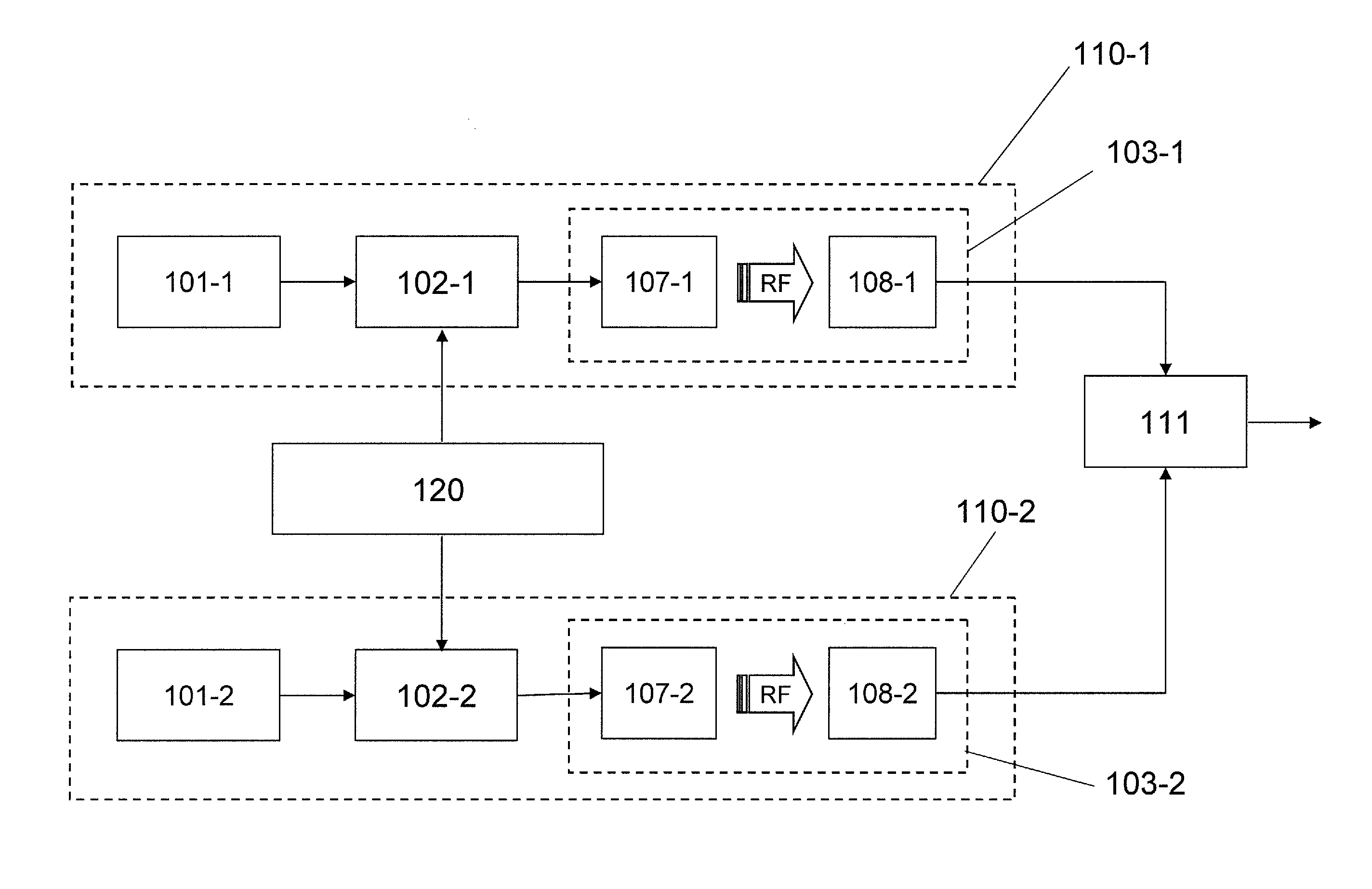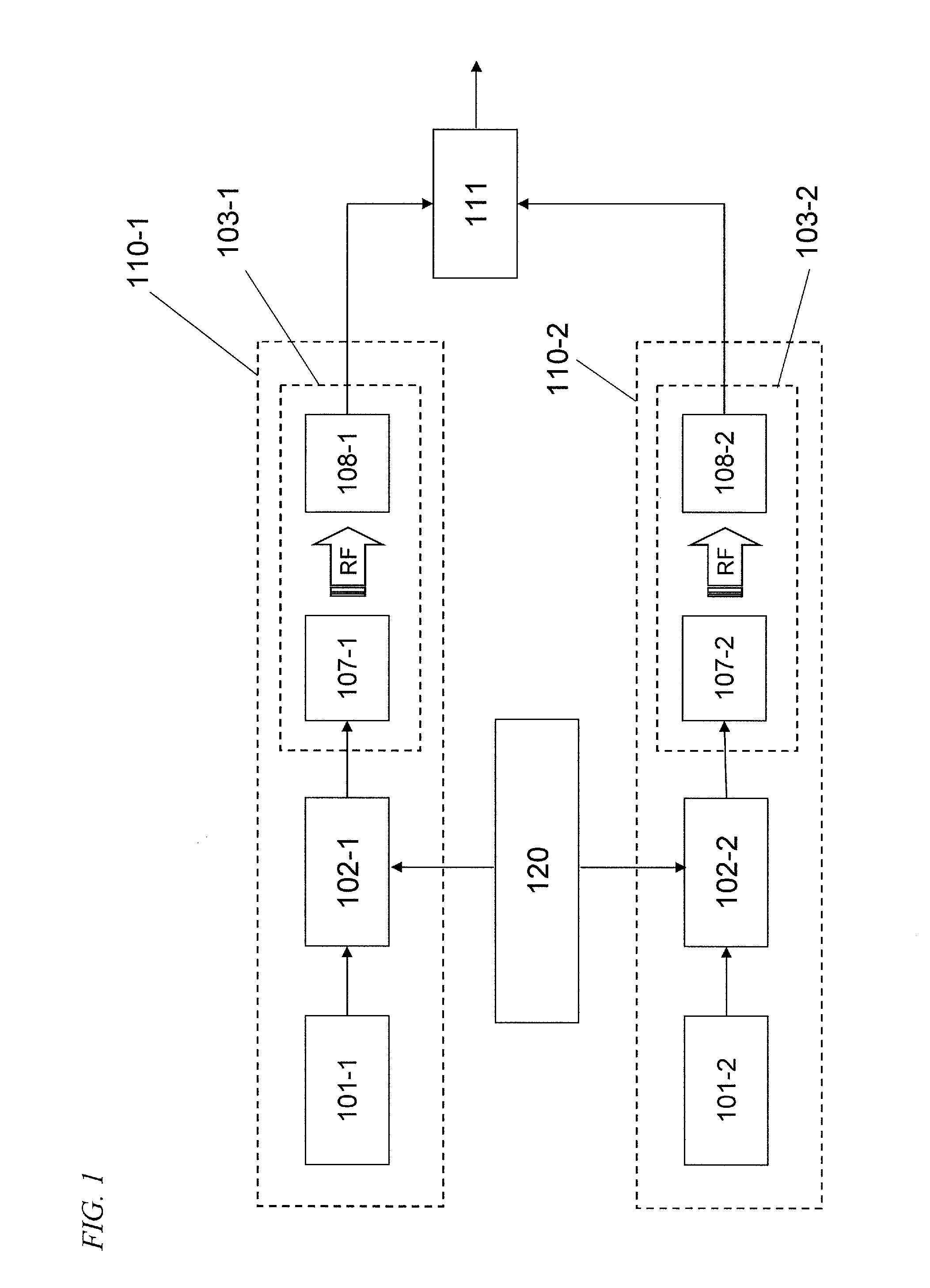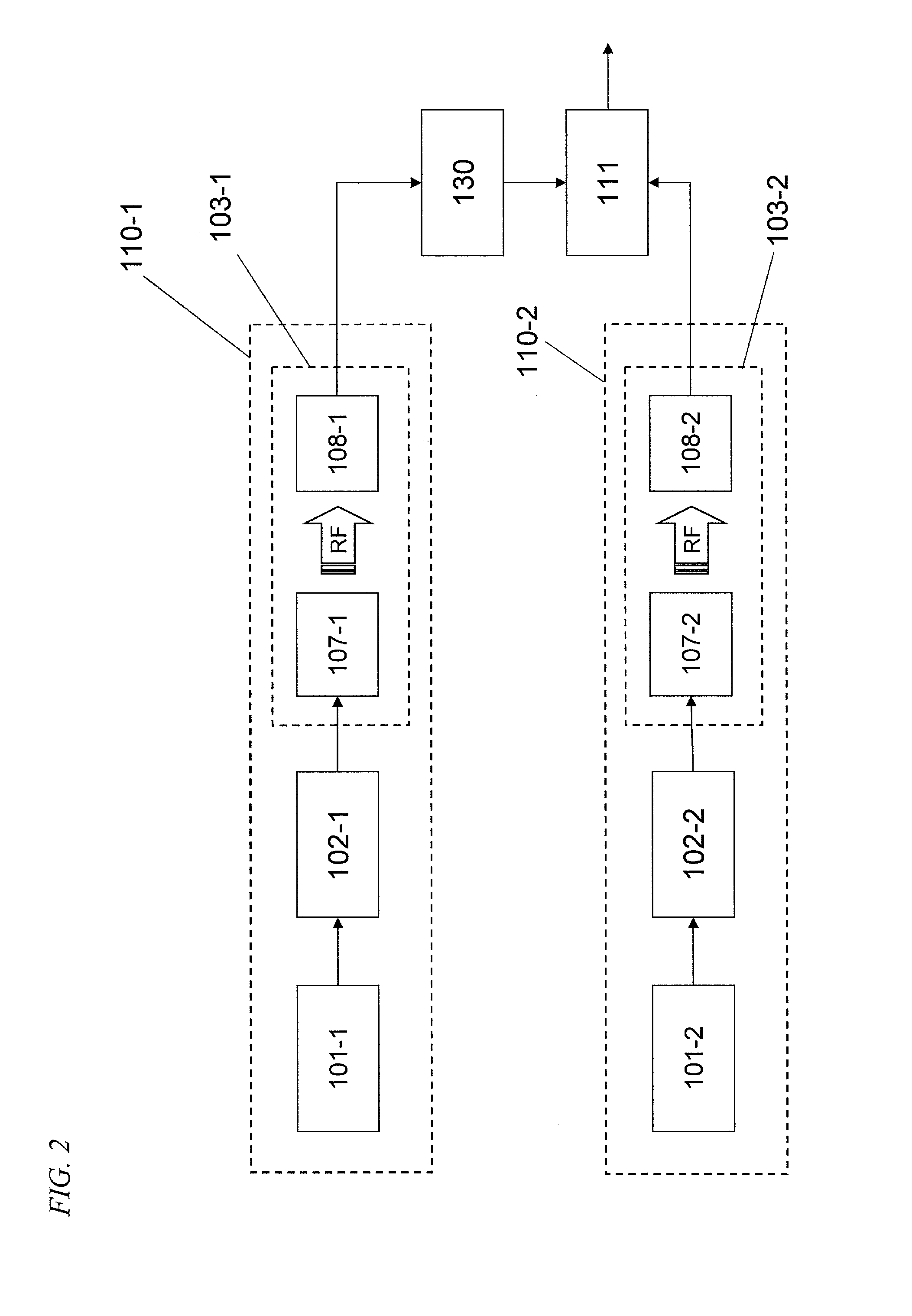Power generation system and power generating unit
- Summary
- Abstract
- Description
- Claims
- Application Information
AI Technical Summary
Benefits of technology
Problems solved by technology
Method used
Image
Examples
embodiment 1
[0052]First of all, a First Specific Preferred Embodiment of the present invention will be described with reference to FIGS. 3 through 8. FIG. 3 illustrates an overall arrangement for a power generation system as a first preferred embodiment of the present invention. The power generation system of this preferred embodiment includes: a number of power generating units 110-1, . . . and 110-n, each of which converts the solar energy into RF energy and transmits the RF energy; a combining section 111 that combines together the respective RF energies supplied from those power generating units and outputs the combined RF energy; and a power converting section 112 that converts the combined RF energy obtained by the combining section 111 into either DC energy or AC energy with a lower frequency than the RF energy and then outputs the converted DC or AC energy to a load (such as an electronic device) or a utility grid.
[0053]Each power generating unit 110 includes: a power generating device ...
embodiment 2
[0106]Next, a second preferred embodiment of the present invention will be described with reference to FIG. 9.
[0107]The power generation system of this preferred embodiment can match the respective impedances of its circuit blocks to each other according to a variation in the output impedance of the power generating device 101, which is a major difference from the power generation system of the first preferred embodiment described above. Thus, the following description of this second preferred embodiment will be focused on the differences from the power generation system of the first preferred embodiment and their common features will not be described all over again to avoid redundancies.
[0108]If the power generating device 101 is a solar cell, the output impedance of the power generating device 101 may vary according to some environmental condition such as the intensity of the sunlight that irradiates the cell and the temperature of the cell itself. For that reason, if a fixed load...
PUM
 Login to View More
Login to View More Abstract
Description
Claims
Application Information
 Login to View More
Login to View More - Generate Ideas
- Intellectual Property
- Life Sciences
- Materials
- Tech Scout
- Unparalleled Data Quality
- Higher Quality Content
- 60% Fewer Hallucinations
Browse by: Latest US Patents, China's latest patents, Technical Efficacy Thesaurus, Application Domain, Technology Topic, Popular Technical Reports.
© 2025 PatSnap. All rights reserved.Legal|Privacy policy|Modern Slavery Act Transparency Statement|Sitemap|About US| Contact US: help@patsnap.com



